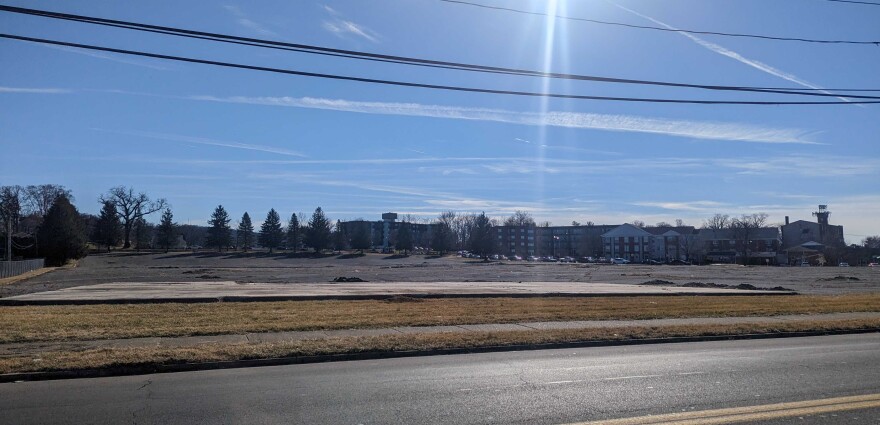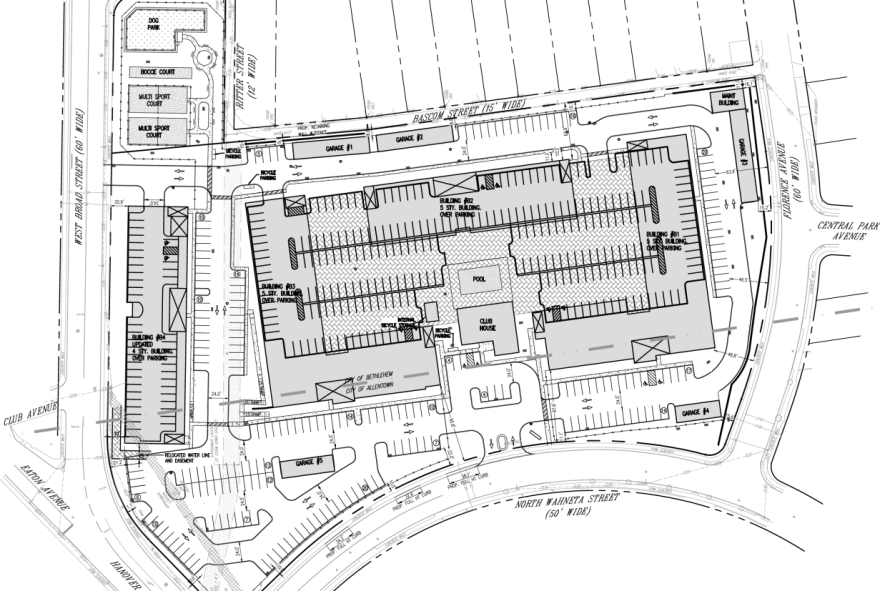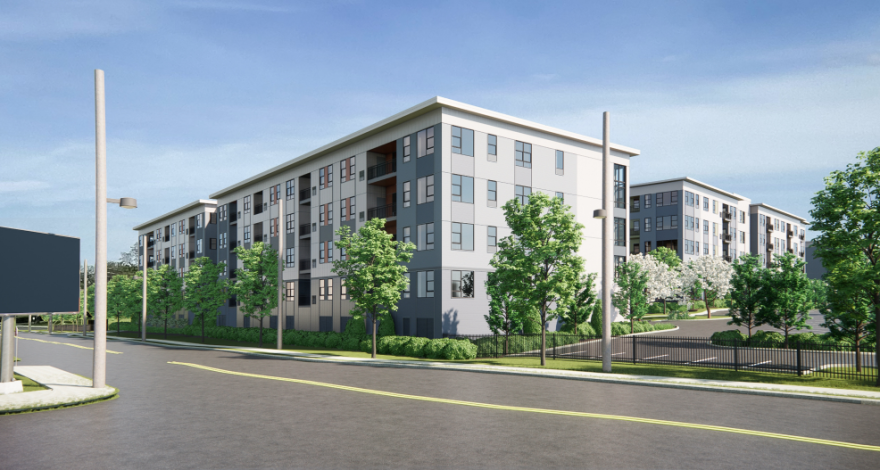BETHLEHEM, Pa. — The potential development of a proposed four-building, 317-apartment complex near the city line has come to a halt — for now.
The developer will have to head back to the drawing board and find a way to use smaller buildings for the Hanover Apartments if a subsequent project is to be approved.
- The Bethlehem Zoning Hearing Board denied a dimensional variance for the proposed Hanover Apartments
- The applicant was seeking zoning relief for building length and commercial space
- Neighbors have 45 days to file an appeal if they wish. The applicant would then have an additional 30 days following that to pursue their own potential appeal
The zoning hearing board Wednesday night denied the dimensional variance developers sought, which would have allowed building lengths of 290 feet.
The night wasn't a total loss for the applicants, however. Zoners approved their request for a favorable interpretation of a city ordinance that slashes the first-floor commercial use requirement for the frontmost building.
The applicant — BAHX LLC of Cedar Knolls, New Jersey — was seeking zoning relief for the massive development at the site of a former car dealership. The firm has planned to consolidate four tax parcels — 2235 W. Broad St., 2300 Hanover Ave., 2220 W. Florence St. and 2211 W. Broad St. — into one for the proposed buildings at the Bethlehem-Allentown border.
What's to come
Zoning board solicitor Steven Boell said a written decision is to come. Neighbors would have 45 days to file an appeal with Lehigh County Court if they choose. The applicant would then have an additional 30 days following that to pursue their own potential appeal, according to attorney Timothy Stevens, who represents some of the opposing neighbors.
Following the vote, Stevens said the developers are free to present a whole new plan. That could come even following several hearings regarding the current proposed development and dimensions.

Resident comments
Many residents have said they feel the hearing process already has dragged on for too long.
Some say the five-story buildings will spoil the neighborhood and they'd prefer to see green space or a park.
“It’s a little disappointing for democracy."Ryan Hulvat, Broad Street resident
“It’s a little disappointing for democracy,” said Ryan Hulvat, of Broad Street.
Despite the zoners' denial of the 290-feet-long buildings, residents said the favorable interpretation of a city ordinance sets a faulty precedent for future cases of similar zoning situations. They feel more and more four- and five-story buildings could start popping up around the city as a result.
“That means that huge building that’s going to be right down the street from us, it’s just going to be this wall of building,” nearby resident Dawn Jastrzemski said.
Terry Kloiber, nearby resident of Grandview Boulevard, said she felt that the zoning board "totally missed the point" by approving the commercial use variance.
"They are going to totally ruin the health and aesthetics of our neighborhood," Kloiber said. "I am so disappointed and truly feel the city has let us down."

Closing arguments from counsel
Before the vote, there was a debate on which building of the bunch would be considered “fronting.”
James Preston, an attorney for the developers, said the residents’ argument was splitting hairs about lots and properties, and not focusing on buildings in particular. He added that the front of buildings should be in line with the front of lots.
“If it seems like it’s problematic, it is. And the reason it is, is because the interpretation of the ordinance is unreasonable.”James Preston, applicant's counsel
“If it seems like it’s problematic, it is,” Preston said. “And the reason it is, is because the interpretation of the ordinance is unreasonable.”
He said the question of the West Broad Street building’s orientation in relation to nearby North Wahneta Street, its potential commercial use and whether it’s the frontmost building of the group has yet to be answered.
“It’s meant to be an apartment complex with amenities that serve the complex, and hence the buildings are oriented towards the center,” Preston said.
In regards to the requested building length variance of 110 feet over the maximum allowed by city code, Preston said a municipal storm sewer easement “consumes a significant amount of the building” that's proposed.
Section 1305.A of the city zoning code states the following: “ … such housing shall be located in the same building as a principal commercial use that is on the front street level. This requirement for a street level commercial use shall not apply to buildings fronting on local streets.”
“The city of Bethlehem zoning ordinance doesn’t have the extraterritorial reach to designate what that street is."Matthew Deschler, Bethlehem city solicitor
Bethlehem Planning Commission solicitor Matthew Deschler, arguing in opposition of the dimensional variances, said that North Wahneta Street near the property is part of Allentown. And since there’s been no determination brought forward as to whether or not that street is considered “local,” it falls on the applicant to make that case if they choose to not have to follow city code.
“The city of Bethlehem zoning ordinance doesn’t have the extraterritorial reach to designate what that street is,” Deschler said.
He added that the requested building length variance is “a maximization of development potential,” and not a basis for an approved dimensional variance.
Preston offered a rebuttal, saying that the ”economic detriment,” in this case, is caused by the physical circumstances and an inability to reasonably develop the property.


